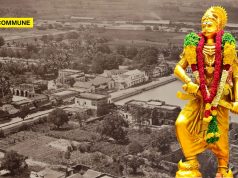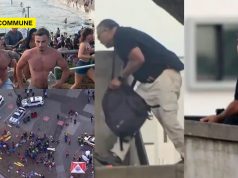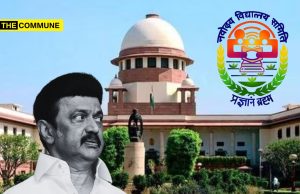
At the centre of discourse in Tamil Nadu is the word “Self-respect.” This word is a moving target with various definitions. Let us explore what genuine self-respect means in the Chenbagaraman way.
Venkittan – The Policeman’s Son
Sri Chinnaswami Pillai was a police head constable in Trivandrum married to Smt. Nagammal, the daughter of the personal doctor of the ruler of Travancore, Dr. Padmanabha Pillai. These two Tamil-speaking families were from Nanjil Nadu, which included the present-day Kanyakumari district. On 15 September 1891, their eldest son, fondly called Venkittan, was born.
An intelligent boy, he was formally named Chenbagaraman and started his education at a primary school in Trivandrum. He often embarrassed his policeman father by publicly chanting Vande Mataram and Bharat Mata Ki Jai. He formed the Sri Bharata Mata Youth Association with the local youth and even coined the slogan “Jai Hind.”
Then came a moment when his father had to take him into custody. Being underage, the authorities decided to leave the youth away from Trivandrum and let them walk back as a punishment. The smart and quick-thinking Venkittan tricked a police vehicle into taking his group back to the town.
Meeting Sir Walter Williams Strickland, the Anarchist Baronet
Sir Strickland inherited the title 9th Baronet but formally renounced it and his British citizenship. He was multi-faceted – an anarchist according to the Imperialists, a gypsy, a bohemian, a social thinker, a botanist, and a great friend of the cause of free Bharat. He often wrote in The Indian Sociologist, the newspaper edited by Shyamji Krishnavarma.
Strickland met Chenbagaraman and his friend Padmanabha Pillai in Trivandrum. Chenbagaraman was seventeen when he, Strickland, and Padmanabhan took the German liner NGL York to Italy. In Italy, Strickland put him in Berlitz Language School in Naples to learn European languages.
Chenbagaraman moved to Zurich and joined an engineering college. He formed a group, the Pro-India Committee, and came in contact with Shyamji Krishnavarma. Later, he joined Berlin University and met staunch Indian nationalists such as Madam Cama, Lala Hardayal, and Raja Mahendra Pratap. On 31 July 1914, he created the Indian National Voluntary Corps, the predecessor of Netaji’s INA.
“Emden” Chembagaraman Pillai
Chenbagaraman Pillai joined the German Navy and served the light cruiser ship (it was not a submarine as many think), SMS Emden, as its Second Officer. This fast-moving Dresden class light cruiser mainly operated along the Indian Ocean during the First World War. Emden bombed Madras and set the oil tankers in the harbour ablaze on the evening of 22 September 1914. On the waters of Kerala, it sank five British vessels in fifteen days. Chenbagaraman Pillai and a few other sailors alighted in Kochi and dined at a Jew’s house.
Foreign Minister, Provincial Indian Government
Chenbagaraman Pillai met Netaji Subhash Chandra Bose in Vienna in 1919, inspiring him to form INA. He became the Foreign Minister of the Provisional Indian Government, formed in Kabul, Afghanistan, with Raja Mahendra Pratap Singh as President and Maulana Barakatullah as Prime Minister.
Friendship With Hitler And Making Enemies Of Nazis
Chenbagaraman Pillai was the only person of colour in the National People’s Party, an ally of the Nazis. He enjoyed a close friendship with Hitler. Hitler met the press on 10 August 1931. When asked about India and British rule, he responded that it was the non-Aryan Indian’s fate to be ruled over by the British. Again, on 4 December 1931, he said, “Britain losing India would not augur well for any nation, including Germany.”
An enraged Chenbagaraman Pillai sent Hitler a letter with an ultimatum to withdraw his remarks. He said, “You seem to attribute more importance to the colour of the skin than blood. Our skins may be dark, not our hearts.” Hitler apologised to the people of India. The people around Hitler didn’t take this incident kindly.
Hitler became the Chancellor of Germany in 1933. His people seized the opportunity to raid Chenbagaraman’s house, manhandle, and poison him. He took ill and moved to Italy to treat a clot in his brain. On 28 May 1934, Chenbagaraman Pillai left his mortal coil and passed away.
Karamana, Where I Shall Dissolve
As per his final wishes, his ashes were immersed in the Karamana River in Trivandrum on 17 September 1966, thirty-two years after his death. His ashes came from Bombay aboard INS Delhi, a light cruiser ship. Rear Admiral SM Nanda (Later, CNS and Admiral), the Deputy Chief of Naval Staff, commanded the vessel to Cochin.
Thiruvalluvar’s following words fit the man who gave us the slogan “Jai Hind,” an epitome of self-respect who lived only forty-two short years.
“நிலவரை நீள்புகழ் ஆற்றின் புலவரைப்
போற்றாது புத்தே ளுலகு”
Tirukkural, Fame, 234
Behold the man that hath won a lasting, worldwide fame: the Gods on high prefer him even before Saints – The Kural or The Maxims of Thiruvalluvar by VVS Aiyar.
Jai Hind
Raja Baradwaj is a marketing communications professional who works with a leading technology multinational company. He is an avid reader, history buff, cricket player, writer, and student of Sanskrit and Dharma Sastra.
Subscribe to our Telegram, WhatsApp, and Instagram channels and get the best stories of the day delivered to you personally.




